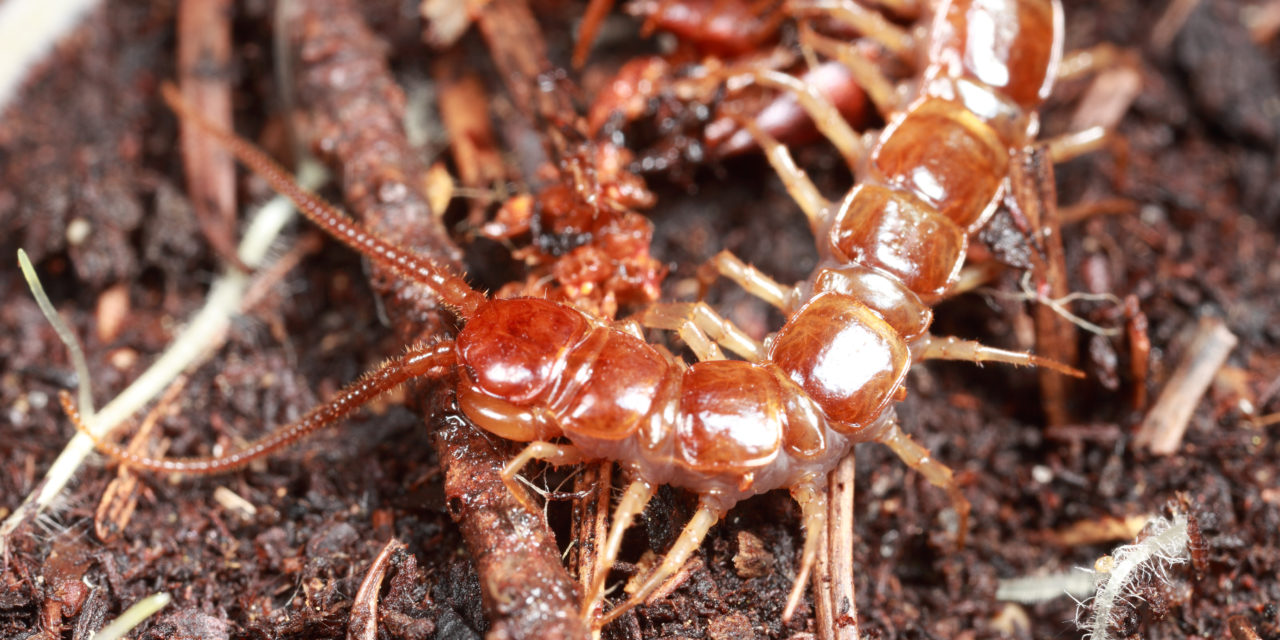Did you have any idea that a centipede was one of the best insect predators found in the garden? I didn’t! Just last week, I was digging up a container full of soil and made a point to exterminate one. I am just put off by strange looking creatures, but the centipede is acclaimed as a helpful arthropod to attract to the garden.
First, a distinction needs to be made between millipedes and centipedes. Millipedes are vegetarians and not good for the vegetable garden. Centipedes are consummate insect killing machines. You can tell the difference by looking at their bodies. The centipede has only one pair of legs for each of their body segments while millipedes have two pairs of jointed legs on most body segments. Millipedes move slowly and burrow while centipedes are fast moving. Centipedes are flexible, dorsoventrally flattened arthropods while millipedes are more rigid arthropods distinguishable by their sub cylindrical shape (Yes, I got this definition out of a textbook). It means that centipedes are fast moving flat creatures while millipedes are more rounded slowpokes. One interesting fact about centipedes is that they never have an even number of legs so they will never have one hundred legs.
Many, but not all, centipedes are venomous. The specialized front limbs or maxillipeds of the centipede contain poison glands that help them hunt their prey. They use these powerful front legs to catch and hold their prey enabling them to inject their victim with poison from their jaws. Since they have these poisonous glands in their jaws, caution should be used when handling them, but since the jaws of centipedes are weak they rarely penetrate human skin. If one did manage to bite a human, it can cause swelling but is generally much less painful than a bee sting. The larger the centipede, the more painful the bite. Small children and those who are allergic to other insects may have a more profound reaction.
Centipedes like the same types of habitats as do slugs but the good news is that they feed on slugs and slug eggs. They live under stones, damp boards or other debris. They thrive in dark, moist places. Attract centipedes by putting some stones in or around your garden, it’s like putting out a welcome mat. If your garden area is situated in a windy location, leave them a pile of leaves or other organic materials to hide under during high winds which can dry out their bodies.
While centipedes will eat most any insect, they absolutely love flies. They also eat spiders, roaches, crickets, and pill bugs. Since they are active at night, you will probably not see them when you are gardening but if you give them habitat, they will be able to reduce the insect pest population.
Garden centipedes have a life span of six years. If you find one inside your home, don’t panic. It will take out insect pests like spiders and roaches from your basement but if you are bothered, put on some gloves and take the centipede outside to your garden. Centipedes are among the most efficient highly recommended of all insect control predators and they don’t require anything but a few stones to draw them to your backyard. Be on the lookout for this great addition to your garden. Take time to relax and enjoy the day! Be Blessed! Anne May






